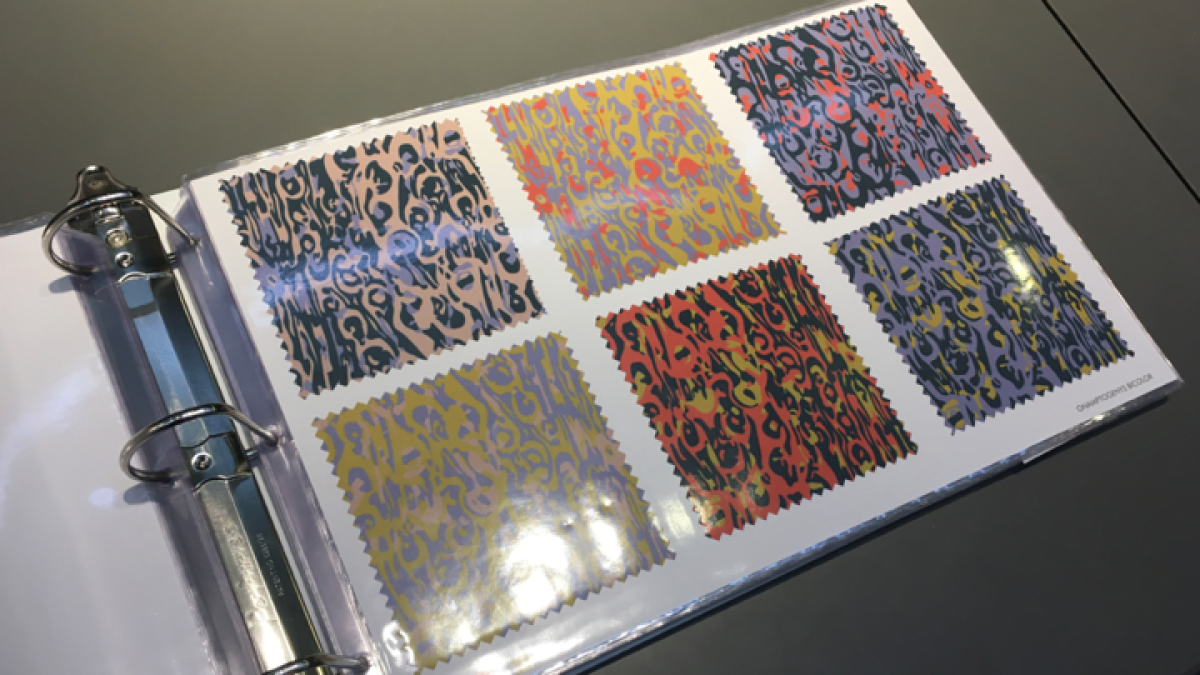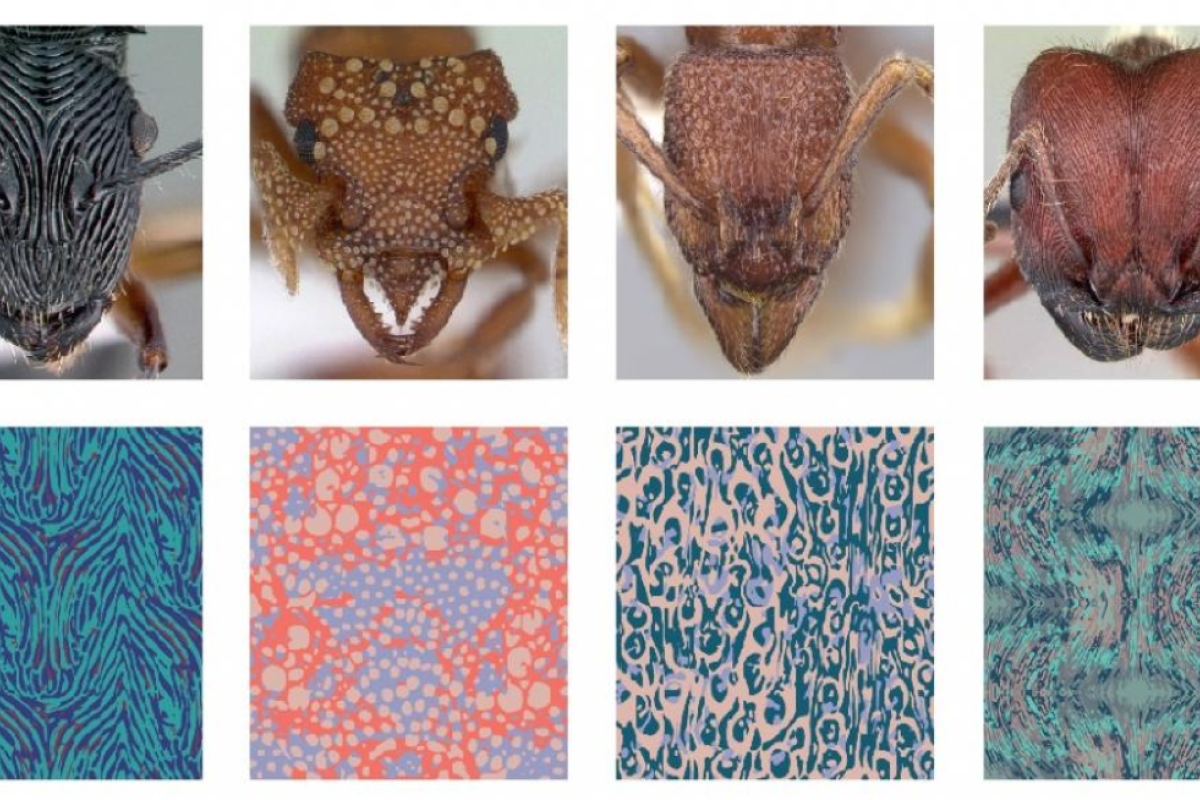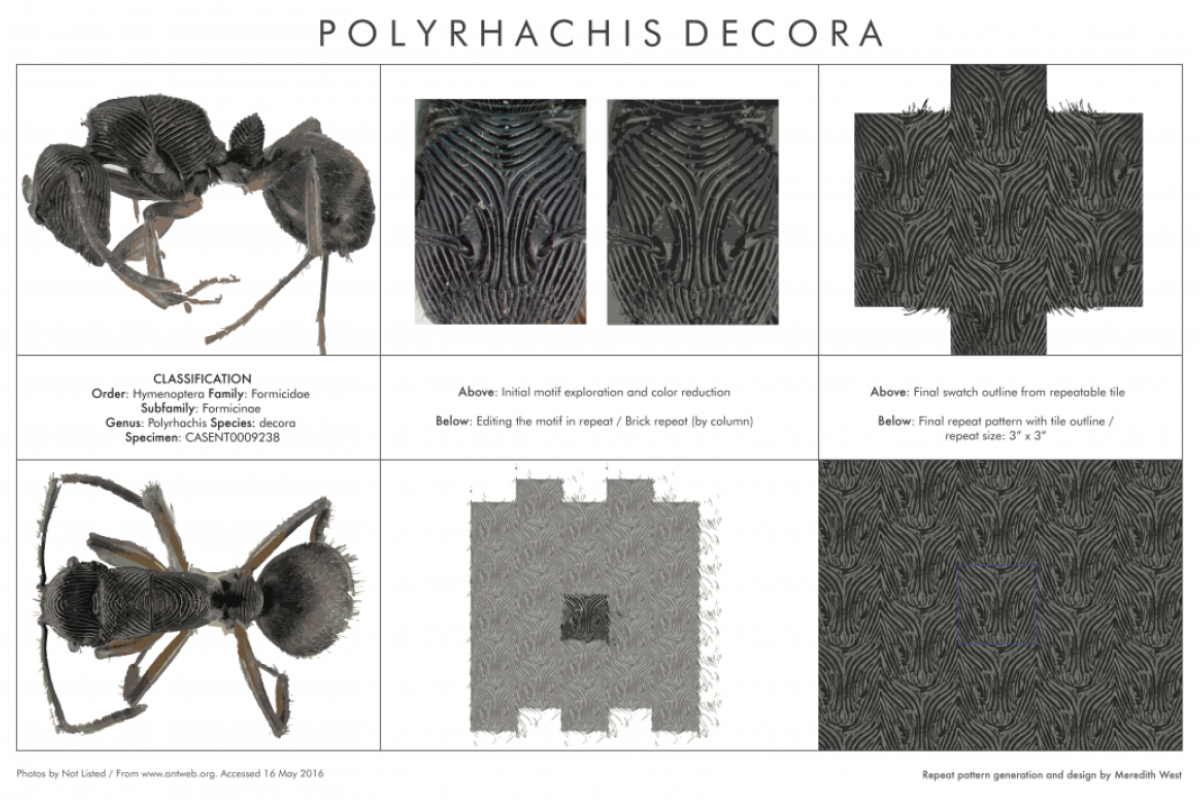Ant-patterned pillows cushion research, raise awareness for insects and biodiversity

Clint Penick is feeling a little “antsy” about his new project — in the excited way one might feel about opening a holiday gift.
Penick, an ant aficionado and assistant research professor in the Biomimicry Center at Arizona State University, is offering a rare perspective of the insect kingdom’s plucky picnic pests — by way of pillow. Blending science with art for a practical finish, Penick and his fellow researchers have created a unique line of decorative cushions that reflect their affinity for ants, one he hopes will help raise awareness about the beauty and benefits of the tiny armies that service our ecosystems.
“I’ve looked at ants under microscopes for years, but I never paid much attention to the patterns on their bodies aside from using them to differentiate one species from another,” Penick said. “This all changed when I was teaching an undergraduate course on public health, and we started to wonder how ants with rough body patterns were able to clean themselves and stay free from pathogens. At the same time, we realized the ant patterns were beautiful and might be applied to design.”
That idea to amplify the sculptured patterns of ant exoskeletons was first hatched at North Carolina State University where Penick was working on postdoctoral research. Before bringing the research to ASU’s Biomimicry Center, Penick and two other scientists — Adrian Smith and Rob Dunn — recruited fabric designer Meredith West to translate ant patterns from a database of ant imagery into prints. With prints in hand, they have now produced a line of pillows available through the online company Threadless Artist Shops.
“We didn’t just want to have ants on a pillow,” Penick said. “We wanted the pattern to be more abstract, like how zebra stripes represent a zebra without showing the whole animal. We raided a collection of ants I had gathered from different places around the world to create this pillow line and the 'spiny ants' from the genus Polyrhachis that I gathered in Australia became the basis for our first pillow design.”
Penick says the pillows represent a rare opportunity to access a science-art collaboration as a practical product that anybody can buy. Just in time for the holidays, the pillows are now available for purchase online under the brand name HolotypeA word to describe a single type specimen upon which the description and name of a new species is based., with sales proceeds going to support research efforts at ASU.
Through the Holotype ant pillow project, Penick and his team hope to raise awareness about the importance of biodiversity in our ecosystems. Pointing to the many benefits that stem from the variety and variability of life on Earth, Penick says protecting biodiversity should be held in the same regard as awareness about climate change and increasing urbanization.
“One thing that’s great about Arizona is that among the United States, we actually have the highest ant biodiversity,” said Penick, who also studied ants while earning his PhD in biology from ASU's School of Life Sciences in 2012. “It’s one of the reasons why we are doing research on antimicrobials produced by ants. A lot of human medicines come from natural products — especially plants, but insects represent promising sources as well. Biodiversity also helps to keep our ecosystems healthy and prevent invasive species from spreading.”
While largely overshadowed by more familiar species such as pandas, giraffes or rhinoceroses in the conversation about biodiversity, insects represent half of the two million species that have been described by scientists and are playing a significant role in maintaining and transforming our ecosystems. Penick points to research he has done on ants in dense cities like New York as an example.
In New York City’s famed theater district, ants eat the equivalent of 60,000 hot dogs per year in garbage waste that’s dropped on the ground.
“It turns out that ants can do quite well in cities,” he said. “There are somewhere over 8 million people living in New York City, but we estimate there are at least 16 billion ants — roughly 2,000 ants for every human living in New York City. And we know they can do a lot of beneficial things for people living in New York.”
Along the streets of Broadway, home to New York City’s famed theater district, Penick says ants are eating the equivalent of 60,000 hot dogs per year in garbage waste that’s dropped on the ground. He says ants have huge benefits to the city, cleaning up garbage as they navigate their way around the concrete jungle. And because they dig their nests underground, Penick says ants turn as much or more soil than earthworms, so they are really important in aerating the soil. He also says ants eat a lot of invasive pest species, serving as combatants for trees that might be under attack.
Penick says he hopes his research and pillow project will get people to pay attention to the positive aspects of insects and to think about these tiny species as beautiful and beneficial to society.
The Holotype ant pillows are ready-made for order online. Identified by ant genus and species in binomial nomenclature, the pillows retail for about $30 each and are available in 16 different patterns and various sizes. Science lovers and ant enthusiasts can also collect the Holotype ant patterns as fine art prints or stretched canvas. Learn more at holotype.threadless.com.
Top photo: Swatch samples of the Holotype ant patterns. Photo courtesy Clint Penick.
More Science and technology

ASU student researchers get early, hands-on experience in engineering research
Using computer science to aid endangered species reintroduction, enhance software engineering education and improve semiconductor material performance are just some of the ways Arizona State…

ASU professor honored with prestigious award for being a cybersecurity trailblazer
At first, he thought it was a drill.On Sept. 11, 2001, Gail-Joon Ahn sat in a conference room in Fort Meade, Maryland. The cybersecurity researcher was part of a group that had been invited…

Training stellar students to secure semiconductors
In the wetlands of King’s Bay, Georgia, the sail of a nuclear-powered Trident II Submarine laden with sophisticated computer equipment juts out of the marshy waters. In a medical center, a cardiac…



